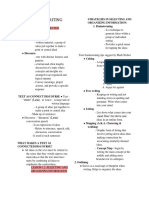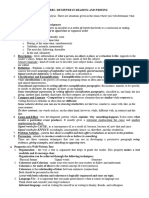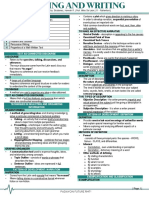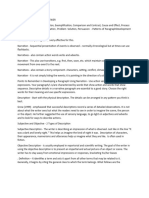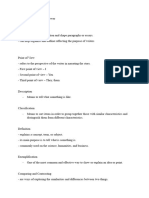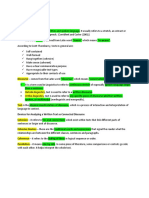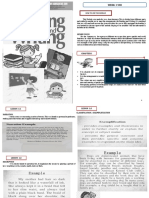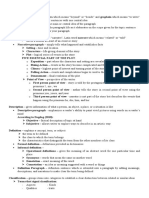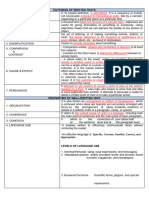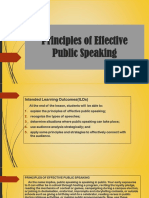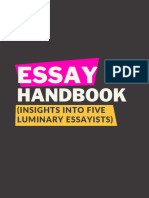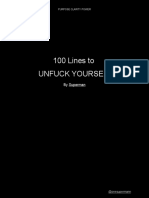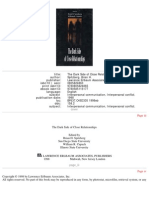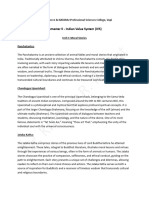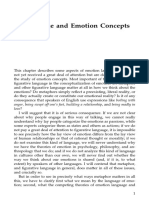0% found this document useful (0 votes)
36 views8 pagesReading and Writing (Notes)
The document outlines various writing techniques, including methods of definition, patterns of development, and types of claims. It emphasizes the importance of coherence, cohesion, and structure in writing, while providing examples of different writing styles such as narration, description, and persuasion. Additionally, it discusses the significance of using unbiased language and appropriate vocabulary to enhance clarity and effectiveness in communication.
Uploaded by
Rona Flor Caday Bug-osCopyright
© © All Rights Reserved
We take content rights seriously. If you suspect this is your content, claim it here.
Available Formats
Download as PDF, TXT or read online on Scribd
0% found this document useful (0 votes)
36 views8 pagesReading and Writing (Notes)
The document outlines various writing techniques, including methods of definition, patterns of development, and types of claims. It emphasizes the importance of coherence, cohesion, and structure in writing, while providing examples of different writing styles such as narration, description, and persuasion. Additionally, it discusses the significance of using unbiased language and appropriate vocabulary to enhance clarity and effectiveness in communication.
Uploaded by
Rona Flor Caday Bug-osCopyright
© © All Rights Reserved
We take content rights seriously. If you suspect this is your content, claim it here.
Available Formats
Download as PDF, TXT or read online on Scribd
/ 8



